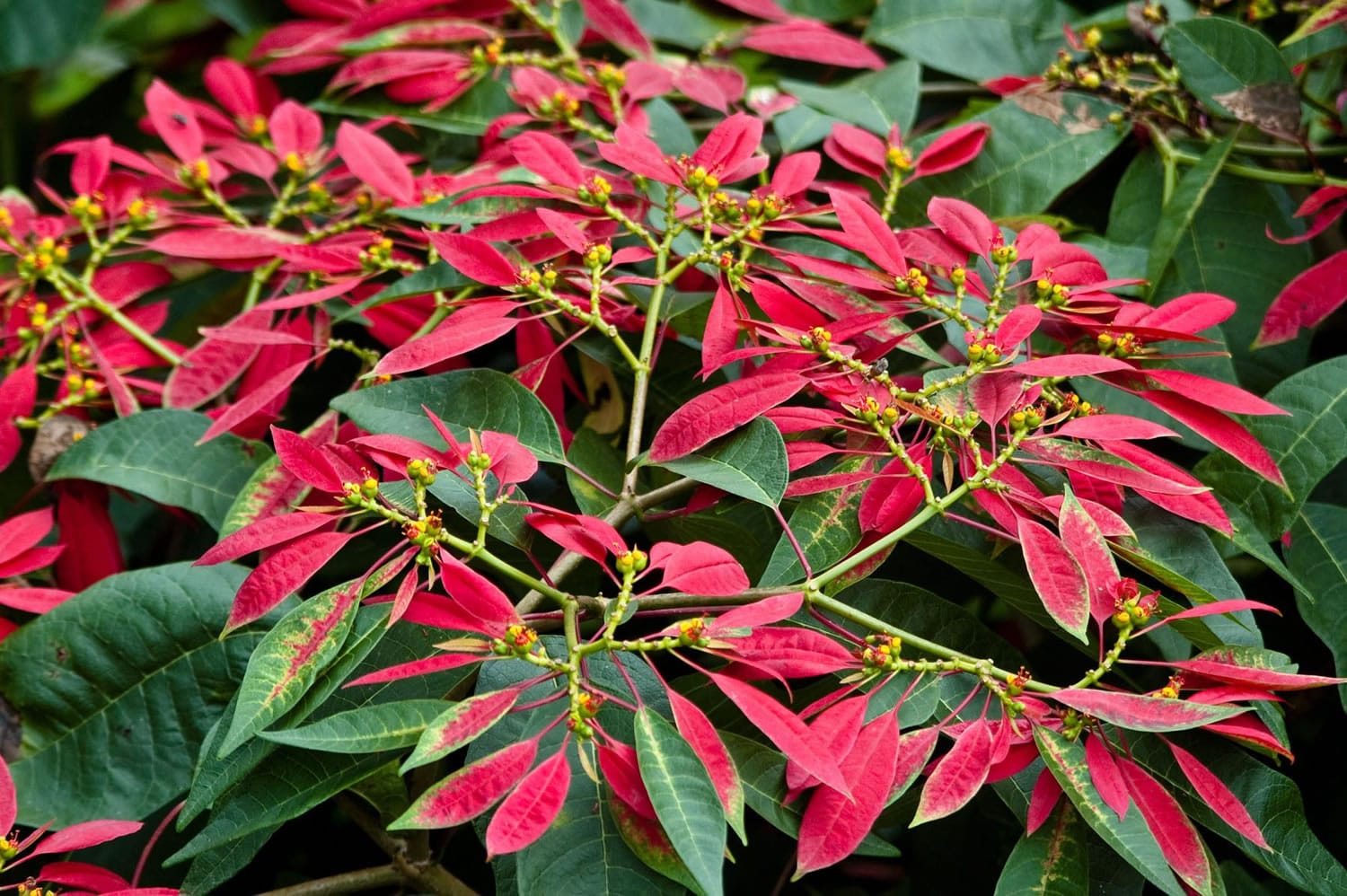One of the most popular holiday plants, the poinsettia has become synonymous with the Christmas season, but this wasn’t always the case.
Native to Central America, especially in southern Mexico, the plant’s bright red bracts (modified leaves that turn color, and often incorrectly referred to as flowers) were collected by the Aztecs to make dye for clothing, and its white sap was made into a preparation to treat fevers.
The poinsettia might well have remained an obscure Mexican plant had it not been for the first United States ambassador to Mexico, Joel Roberts Poinsett.
The son of a physician, Poinsett was trained in law and medicine, and served as a U.S. congressman, envoy and eventually secretary of war. He was also interested in the sciences, later helping to found what is now the Smithsonian Institution.
Poinsett’s passion was botany. In Mexico, he became fascinated with a brilliant red plant he saw growing there, Euphorbia pulcherrima, and sent some home to grow in his hothouses in South Carolina. He began propagating the largely unknown plants and then distributing them to botanical gardens and friends.
One recipient was Bartram’s Garden, the prominent Philadelphia nursery. Bartram’s was instrumental in widely distributing the plant — and, according to many accounts, was responsible for promoting the popular name Poinsettia.
The story of the now popular Christmas plant might have ended there, since these early poinsettia plants were not easy to grow. Tall and rangy, they could only be grown in hothouses, and they were difficult to coax into bloom. Fortunately, the charm of this Mexican native caught the eye of another American.
In the early 1900s, Albert Ecke and his son Paul operated a small orchard in Southern California. The father-and-son growers began to notice that the tall, leggy plants of wild-growing poinsettias near their farm bloomed around Christmas, and they set out to sell the cut flowers as a way to make money during their off-season.
They began growing fields of poinsettias and sold them at roadside stands and through local holiday shops. From 1923 until the mid-1960s, the family’s main business was shipping field-grown plants to growers across the country, who in turn would sell to their holiday customers.
These early poinsettia plants were nothing like the plants we find in garden centers and grocery store shelves today. The early plants were tall and poorly branched, and would often drop all their leaves if exposed to the slightest draft.
In the mid-1960s, the Eckes began breeding cultivars that grew better in pots than in the ground, and within a few years they began supplying poinsettia cuttings to their customers via airfreight.
Growers across the country could now raise and sell their own container-grown plants for the holiday season. The Eckes focused on breeding improved cultivars so that the plants were more compact, had more branches, and thus more colorful bracts.
During the early days of the poinsettia’s rise to holiday fame, the Eckes were very involved in promoting their main crop. (Indeed, the family still controls 50 percent of the world market for the plants.) Through media placements such as the holiday sets of “The Tonight Show” and the popular Bob Hope Christmas specials, they worked hard to keep the plant in the public eye.
Popular magazines of the 1960s and early 1970s featured articles about the plants in their holiday editions, and the Eckes made sure tips for caring for this newly popular Mexican Euphorbia were included in the articles to dispel any myths about the plants being difficult to grow.
The poinsettia has come a long way since Aztecs first extolled its virtues. More than 100 varieties are available, and tens of millions are sold every December. That popularity is unlikely to wane — at least, if the Ecke family has anything to say about it.
Sean Conway is the author of “Sean Conway’s Cultivating Life.”



